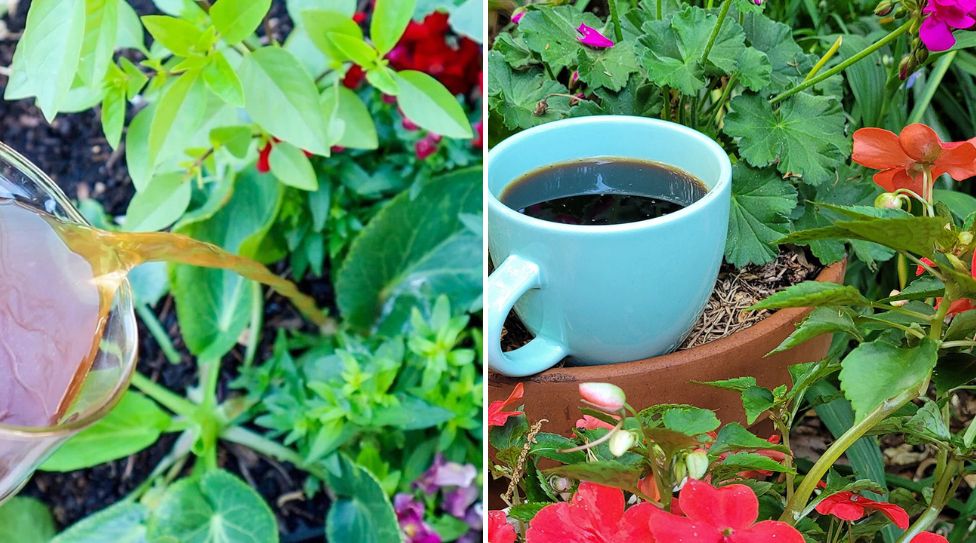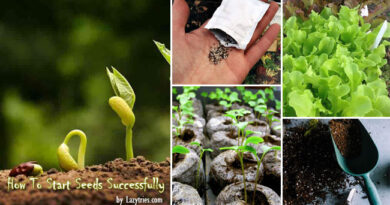Why Your Garden Needs Coffee Tea (and How to Make It Right)
The “Coffee Tea” Plant Trick I Wish I Learned Years Ago

For a long time I thought I was doing my plants a favor by dumping straight coffee grounds on them. And yeah… sometimes they perked up, sometimes they sulked like I ruined their day.
Then one afternoon, my neighbor — a 70-something gardener who grows tomatoes the size of grapefruits — leaned over the fence and said,
“Kid, plants don’t drink espresso. Make coffee tea.”
And that was the turning point.
This simple trick changed how my plants grow, and now I kinda swear by it. Here’s the full guide, with all the details I wish I had when I started.
What Exactly Is Coffee Tea?
Imagine making iced tea… but with leftover coffee instead of tea bags.
That’s basically it.
Coffee tea = coffee grounds (or cooled leftover coffee) + water + time.
Nothing fancy.
But here’s why it actually works:
• It releases nitrogen slowly
Nitrogen = green, healthy leaves.
Too much nitrogen from raw grounds = burned roots.
Coffee tea spreads it out gently.
• It adds trace minerals
Like potassium, calcium, magnesium — small amounts, but plants love consistency.
• It helps soil microbes
Little soil microbes break things down and feed your plants.
They love the mild acidity and organic matter in coffee tea.
• It’s way safer than dumping raw grounds
Raw grounds can clump, mold, and make soil too acidic.
Diluting them solves all of that.
So yeah, coffee tea is like giving your plants a mild energy drink instead of a shot of pure espresso.
How I Actually Make Coffee Tea (The Lazy Method That Never Fails)
Here’s my tried-and-true routine after a few hilarious fails:
-
Add 1–2 tablespoons of spent coffee grounds into a gallon of water
-
Stir or shake (depends on my energy level)
-
Let it sit 24–48 hours
-
Strain it — trust me, those chunky bits make a mess
And that’s it.
If I want it milder, I add more water.
If the plant looks tired? I skip a week.
Short note:
If it smells funky or sour, dump it. That means it fermented too long.
The Best Ways to Use Coffee Tea
(with real explanations so it doesn’t feel like “just do it” instructions)
1. Watering Every 2–3 Weeks
This is the easiest method.
Coffee tea works like a gentle fertilizer. One dose lasts a while.
Why it works:
• It boosts leaf growth
• It strengthens weak plants
• It supports new root development
But don’t overuse it — too much acidity can slow growth.
2. As a Light Soil Spray
Sometimes the top layer of soil gets dusty or dry.
A mist of coffee tea keeps it hydrated without waterlogging it.
Helps with:
• preventing crusty topsoil
• lightly feeding seedlings
• reducing fungus gnat activity (they hate the smell, apparently)
3. Testing It on One Plant First
Every plant has its own “personality.”
My hydrangea acts like it’s at a spa.
My snake plant? It looked offended for days.
Testing helps avoid big mistakes.
4. Avoid Using It in Winter
Plants chill out (literally) in winter.
They don’t want nutrients then — they just want stability.
Giving coffee tea in winter = like offering coffee to someone trying to nap.
Plants That Actually Love Coffee Tea
I used to guess which plants wanted coffee tea, kinda like offering snacks at a party and hoping I picked the right flavor. But over time, and after accidentally annoying a few poor succulents, I learned that some plants truly enjoy this little drink.
Azaleas, gardenias, hydrangeas… these guys act like they’re getting a spa treatment. They naturally prefer slightly acidic soil, so coffee tea fits right in. You’ll notice their leaves look greener and less tired, like someone finally turned the lights back on for them.
Tomatoes and peppers also perk up fast. I swear my peppers grew twice as confident after a few drinks of coffee tea. Maybe it’s the nitrogen boost, maybe they’re just dramatic — no idea, but it works.
And for carrots and root crops? The soil loosens a bit, which helps them grow straighter instead of doing that weird twisty thing they sometimes do. Honestly, the first time my carrots came out looking normal and not like little orange yoga poses, I laughed out loud.
Even some indoor tropicals enjoy it in tiny amounts — like pothos and philodendrons — but keep it gentle. I gave too much to my fern once and it looked at me like it needed a week off.
A Few Warnings I Learned the Hard Way
Every time I think I “fully understand” plant care, something new surprises me. Coffee tea included.
One thing I learned fast: don’t use it too often. I once watered every few days because my basil looked slightly sad, and the soil turned into a sour-smelling mud café. Plants don’t like that. A small dose every 2–3 weeks is plenty.
Another thing — coffee tea is a booster, not a full meal. It doesn’t replace real fertilizer, because it’s low on phosphorus and other stuff plants need to bloom or fruit long-term.
Also, and this is important:
If your coffee had milk, sugar, flavored creamer… throw it away.
Plants do not want a caramel latte. Milk grows bacteria. Sugar brings ants. And your soil turns into sticky chaos. (Yes, I tested this once. No, it did not end well.)
And finally, if you’re growing something picky about pH — like succulents or herbs — test with tiny amounts first. Some plants just want plain water and good vibes.
Why This Trick Works (Explained Like a Real Person)
I’m not a scientist, but here’s the simple version that finally made sense to me:
Coffee tea gives the soil a little nitrogen — enough to help leaves grow strong, but not enough to burn roots. It also feeds the good microbes in the soil, the tiny little “helpers” that break things down and make nutrients easier for plants to grab.
It also slightly improves the soil texture over time, especially in pots where soil gets compacted. And weirdly enough, fungus gnats don’t like the smell; they tend to mind their own business when coffee tea is around.
It’s small, but it adds up.
My Personal Routine (Realistic, Not Fancy)
Here’s the truth: I don’t follow a strict schedule.
This is literally how it happens:
I brew coffee → dump the grounds in a jar → forget about them → see the jar the next morning → strain → pick one plant that looks like it needs a pep talk → water → done.
If you’re the type who likes routines, go for it. But trust me, even the laziest gardener can keep up with this one.




